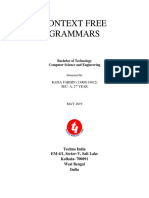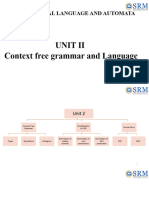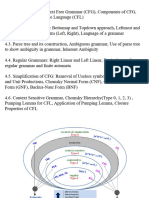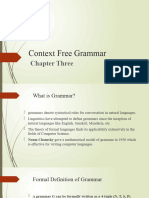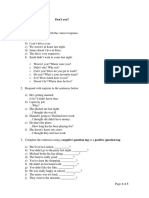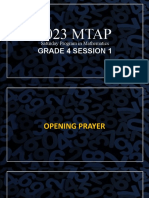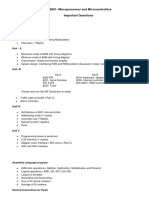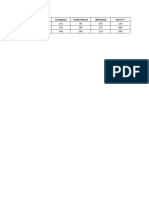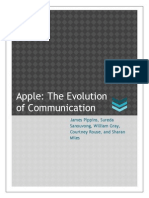0% found this document useful (0 votes)
16 views26 pages9-Syntax Part1
The document outlines the topics covered in a Natural Language Processing course, focusing on Syntax and Context-Free Grammar (CFG). It explains the importance of syntax in language structure, derivation, and parsing, as well as the components of CFGs. Additionally, it provides examples and questions to illustrate grammatical and ungrammatical sentences within the context of CFGs.
Uploaded by
dw9324764Copyright
© © All Rights Reserved
We take content rights seriously. If you suspect this is your content, claim it here.
Available Formats
Download as PDF, TXT or read online on Scribd
0% found this document useful (0 votes)
16 views26 pages9-Syntax Part1
The document outlines the topics covered in a Natural Language Processing course, focusing on Syntax and Context-Free Grammar (CFG). It explains the importance of syntax in language structure, derivation, and parsing, as well as the components of CFGs. Additionally, it provides examples and questions to illustrate grammatical and ungrammatical sentences within the context of CFGs.
Uploaded by
dw9324764Copyright
© © All Rights Reserved
We take content rights seriously. If you suspect this is your content, claim it here.
Available Formats
Download as PDF, TXT or read online on Scribd
/ 26






